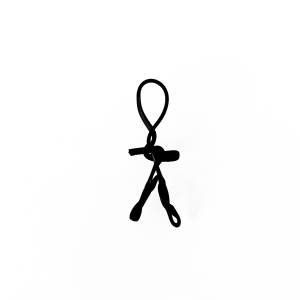chip and pin
It’s the day I’ve been waiting for; my first DIY blood test at home.
I’m quite nervous about it. If I mess up - and I could quite easily - or get a result that’s way off the scale, my GP could reasonably conclude one of the following; (1) I don’t know what I’m doing; (2) my device is inaccurate; or, (3) my INR really is way off the scale. Any one of which would be cause for concern.
I lay out the paraphernalia; INR device, strip for collecting blood, lancet (for pricking finger), kitchen roll and plasters.
I last did this under supervision at the GP surgery. I was nervous then as well. Once the device is switched on and the collecting strip inserted I have 3 minutes to prick my finger and drop a sample of blood onto the strip.
There is no room for error - there’s a precise target area which the blood sample needs to land on - it’s then drawn along the strip and into the device by capillary attraction. A chip inside the strip does clever stuff like identifying itself to the device so it knows it’s my sample and then date, time, temperature and so on.
If I fail to provide a sample in time, the device switches off and I have to start again. This can become expensive because I have to use a new strip each time and they cost £3.00 each (kindly paid for by the NHS).
The lancets on the other hand are as cheap as chips (but not the chips in the strips) - at less than a penny each from a well known Internet retail site. (The lancet is the orange thing that looks roughly chip-shaped.)
I wash my hands and massage my fingers to get the blood circulating. Switch on, insert strip and grab lancet. Break off the grey plastic tip and stab my finger. Nothing. Try another one. Same result. A minute has gone past. Panic. Calm down and try again; the lancet doesn’t work. Read the instructions - fail again. Read instructions more carefully; I’ve been holding it upside down.
With just 30 seconds left, I take the fourth lancet, prick my finger and finally draw blood. It takes ages to make a blob big enough to drop onto the strip (20 seconds as it tuns out) - and so with 10 seconds left on the timer, I successfully place a sample onto the strip. The device does the analysis and eventually beeps to show that it’s finished its work.
My INR is within the therapeutic range. Phew. I phone the surgery with the numbers and they’ll call me back later with my new warfarin dose.
In spite of all the faffing around with the lancets, this is a success. I am free of surgery visits. The hardest part turned out to be trying to remove a plaster from its protective wrapping with one hand, while holding a piece of kitchen roll onto the still bleeding finger. I need to improve my one-handed plaster technique. As well as reading the lancet box instructions more carefully.

Comments
Sign in or get an account to comment.


